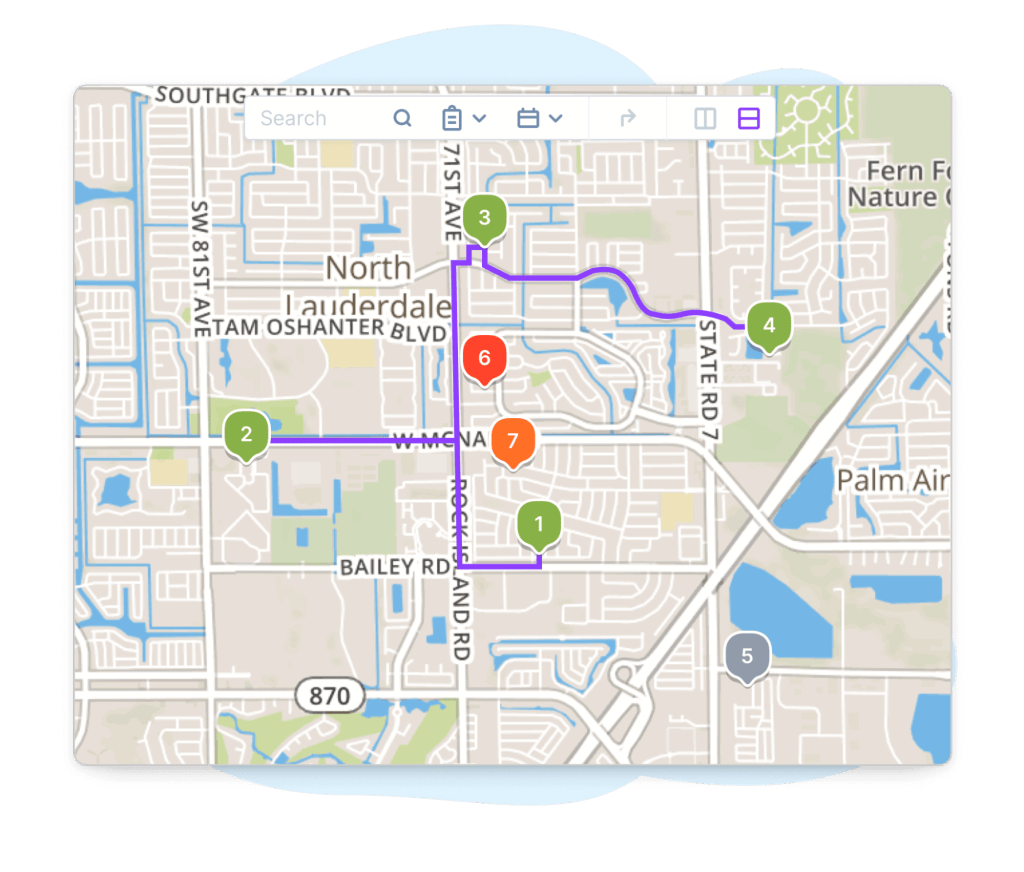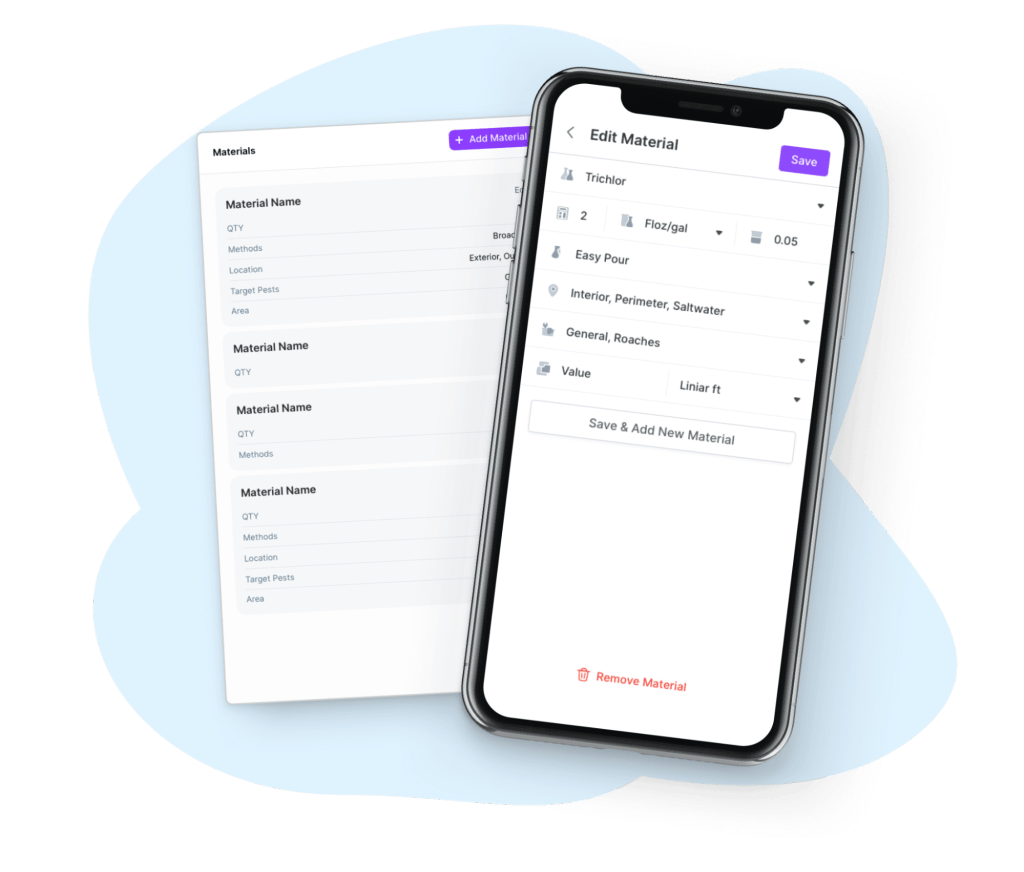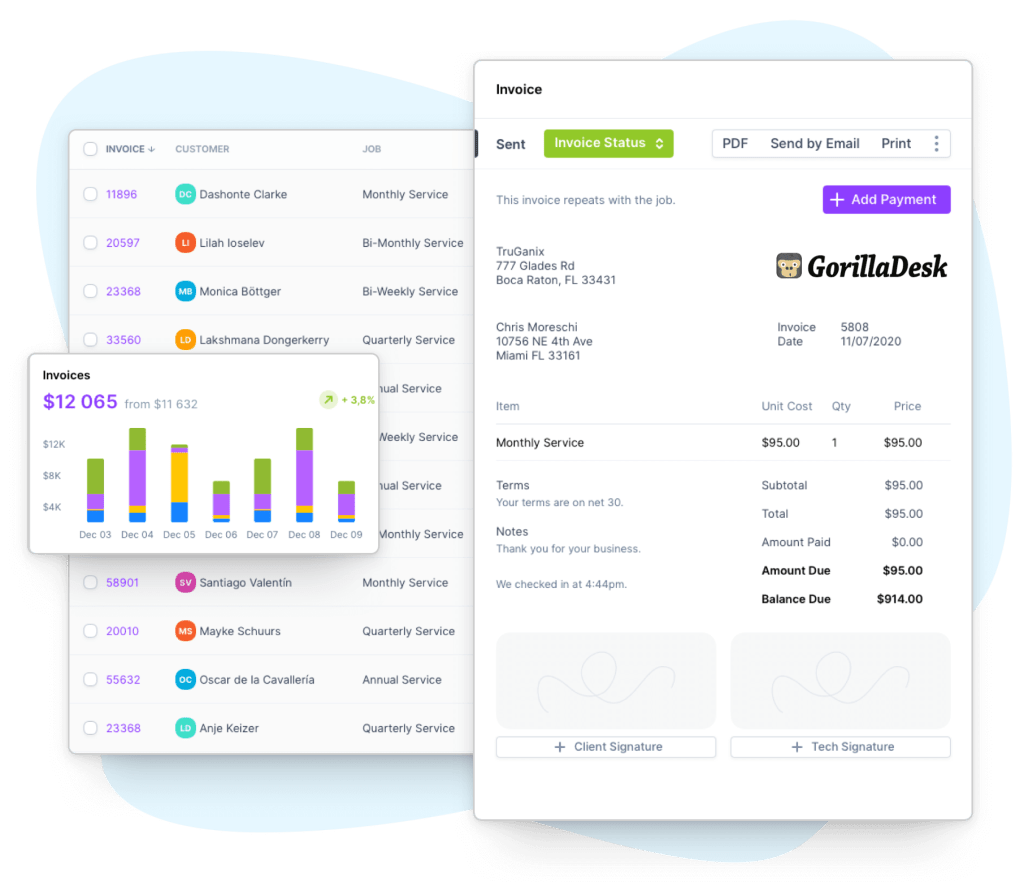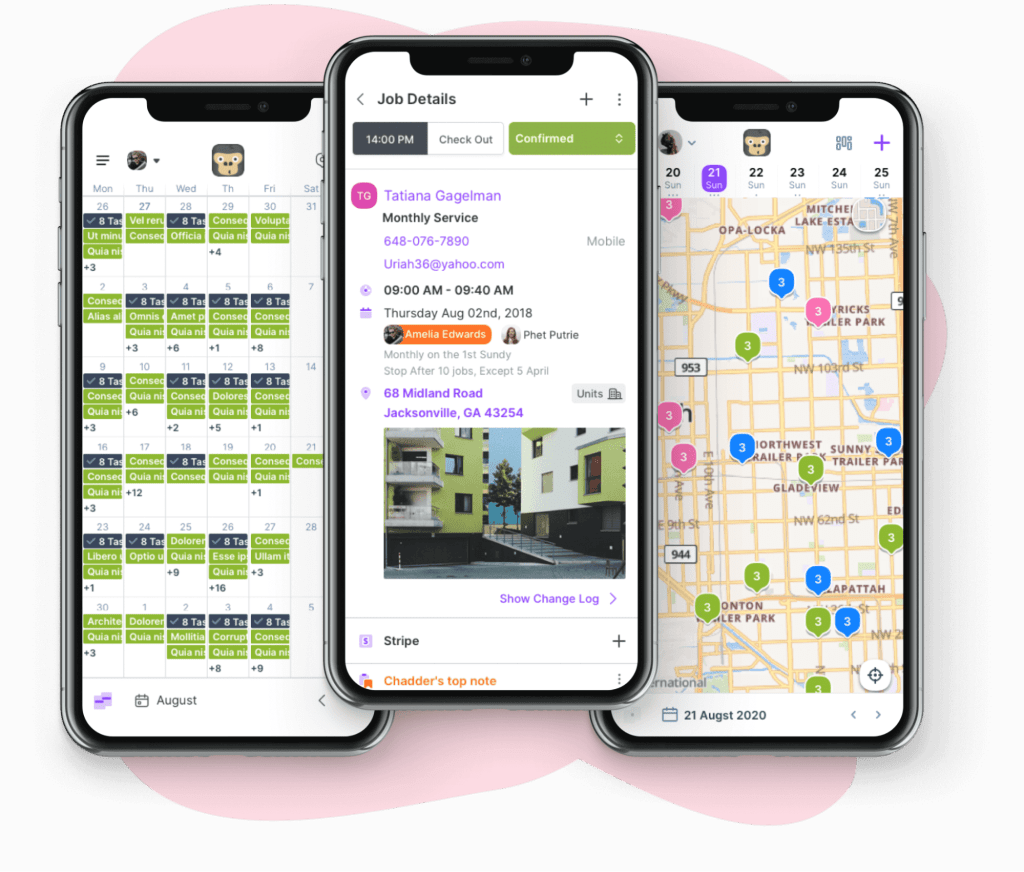Pest control startup costs: Are you spending too much?
GorillaDesk Staff

If you’ve recently started a pest control business, it helps to know if your costs match what similar businesses spend when getting on their feet. On average, it costs $12,272 to start a pest control business in the US.
Will your startup costs be lower or higher than the average? It depends on factors like business size and location. However, knowing how much it costs to start a pest control business helps identify areas where you can improve efficiency and reduce expenses.
We’ll guide you through the ins and outs of pest control business startup costs and share expert tips for earning a profit in your first year.
Strategic business planning for pest control success
Start with these business planning strategies to reduce startup costs and expand profits.
Understand your local market
Your location can greatly impact your startup costs, so research local needs, weather, and population density. Understanding these specifics helps optimize your pest control offers to meet market demand.
Weather and climate determine which pests are most common in your area. For example, scorpions are common in desert climates, while carpenter ants are a big headache for homeowners in New England. Rainstorms increase termite activity, while cold weather drives pests like cockroaches inside.
Keep your pest control services focused on common creepy crawlies in your state. Offering services and buying equipment to remove uncommon pests is an unnecessary expense.
Population density affects the types of pests seen in your area. Crop pests like grasshoppers, aphids, and Japanese beetles are more common in rural areas. Wildlife can be a big problem for less-populated areas, often bringing ticks and fleas along.
Cities may see fewer deer, mice, and grasshoppers, but closely packed residences make easy targets for bed bugs and rats.
Monitor changing environmental conditions in your target market, too. For example, a pest control business in Florida might increase advertising and door-to-door sales after a hurricane. In these situations, ramping up your marketing efforts helps you reach homeowners in need.
Develop pricing strategies
Your potential customers have varying incomes, and while some can afford ongoing protection and prevention, others may prefer single service visits.
Tiered pest control prices help you meet customers where they are financially. Here’s how it works:
- Basic tier: Targets one-off pest problems with low-cost solutions.
- Mid-tier: Targets common pests with slightly higher-priced services. Ideally, this package provides the best value for customers and the most profit for your business.
- Premium tier: Targets harder-to-control pest problems at a high price point.
Offering a payment plan helps customers afford your services, letting them pay over time instead of in one lump sum. Clearly outline the amount due, payment due date, late fees, and follow-up actions in your payment plan agreement.
Other variables to consider when pricing your services:
- Business operations costs: Fixed costs like employee salaries, business insurance, and office rent.
- Costs per service: Pest control equipment like respirators and sprayers, supplies, and labor required to perform a service.
- Property size: Price services based on the square footage of the treatment area to account for additional labor and chemical costs if the area is large.
- Service location: You may charge an extra fee for services in hard-to-reach places like attics or crawl spaces.
Using pest control software like GorillaDesk helps you monitor your pest control business expenses and optimize your prices. GorillaDesk syncs with QuickBooks Online so you can easily track invoice statuses, customer information, discounts, and taxes.
Consider your target business scale
How big should your pest control business be? To answer that, research the number of services, technicians, and offices you need to meet demand.
Consider these questions when deciding on the business scale:
- Are your customers left infested with no pest control solutions? Look for unmet needs for specific pests, income levels, or areas in your local market.
- Do you have the in-house expertise, pest control licenses, equipment, and materials to offer additional types of pest control services?
- Is expanding your service area or offers profitable?
- Do you have enough staff, equipment, and resources to expand your client base or service area?
Always consider your business reputation and customer satisfaction. Grow your pest control business to balance profit with quality service.
How to reduce pest control business costs and improve your margins
Running a successful pest control business requires constant monitoring of your profit margin. This indicates when costs get out of hand, or you need to adjust your prices. Improve your profit margin with these five tips.
1. Improve operational efficiency
GorillaDesk optimizes and automates technician routes for efficiency. (Source: GorillaDesk)
Your business’s operational efficiency refers to reducing wasted time, effort, and materials to control costs while providing high-quality service. Technology offers many ways to build operational efficiency into your business. Pest control software like GorillaDesk optimizes routes and scheduling to reduce technician downtime.
GorillaDesk’s automated invoicing eliminates manual errors. Automatic payment reminders also help you get paid on time.
2. Invest in inventory management and equipment financing
Create treatment application templates in GorillaDesk to reduce waste. (Source: GorillaDesk)
Supply costs for a new pest control business range from $200 to $2,000, while the average cost of equipment can reach up to $5,000. Wrangle these expenses into more manageable sums by investing in inventory management software like GorillaDesk or researching rental equipment.
GorillaDesk tracks chemical usage in the field to reduce inaccurate reporting. It includes templates for uniform treatment application, reducing supply waste. This keeps inventory updated, preventing surprise supply stockpiles.
Equipment requires a larger upfront cost and less long-term investment. If your profit margins are thin, consider renting or buying used equipment to save money in the short term.
Should you lease or buy—new or used? These pros and cons may help you decide:
Used equipment pros:
- Owning equipment gives you full control over its use.
- May qualify for tax deductions.
- Ability to sell in the future and regain some of your initial investment.
- Usually costs less in the long run.
Used equipment cons:
- Costs more upfront.
- Maintained by you, so you’re responsible for repairs and replacement.
- Limits flexibility to upgrade to new technology or better models.
Leasing pros:
- Avoids large upfront costs, so you can invest in other business needs.
- Offers flexibility to upgrade or swap equipment.
- Maintained by the rental company.
Leasing cons:
- Costs more than buying equipment outright over the long term.
- Loses equity and ability to sell equipment later.
- Not always available when needed.
Building relationships with local dealerships could open better opportunities and lower prices.
3. Organize your finances
Choose your business structure, accountant, and business banking account strategically to set yourself up for success.
Choose your business structure
It’s fun and games until tax time, right? Choosing the right business structure can help you avoid headaches.
A limited liability company (LLC) is often recommended for starting a pest control business. LLCs are less complex than corporations, and your personal assets are protected if your business goes bankrupt or gets sued.
LLCs must comply with government laws, including business registration and licensing. Get advice from a professional accountant based on your specifics, as each state has its own specific requirements for forming and operating an LLC. For example, forming an LLC in Arizona requires the publication of a notice in an approved newspaper unless located in specified counties. In California, LLCs must pay an annual franchise tax and file a Statement of Information.
Opening a franchise vs. your own pest control business: Find out the pros and cons of starting a pest control franchise in our guide, including investment costs and best practices.
Hire a professional accountant
Find an accountant experienced with small businesses. They can make filing taxes a breeze and offer advice on business structure, regulatory compliance, and cost savings.
Open a business bank account
It’s best to keep your personal and business finances separate. This makes tracking business income and expenses easier.
Many banks offer special perks like larger cash deposits and electronic transactions, which makes sense if you deal with larger sums of money.
4. Keep marketing costs low
Marketing connects you with customers and grows revenue. PathFactory found that businesses that reinvest 1% or more in marketing saw a 14% revenue increase, and more reinvestment equals a greater revenue increase.
Start small with pest control marketing, especially if you’re a new business. Local SEO, social media, and email are great beginning strategies. You can even use a more traditional marketing strategy, like leaving business cards in public areas and local businesses.
5. Implement risk mitigation strategies for compliance
Proactive risk mitigation helps you avoid large fines or losing your business. Be sure to:
- Meet regulatory requirements: Ensure staff have the required training and certifications, and keep your business license up to date. Create detailed documentation on services and chemicals used.
- Prioritize safety: Provide and maintain gear like ladders, foamers, and Tyvek suits.
- Provide training: Keep employees updated on safe and sustainable pest control practices.
- Create a pest management plan: Detail every step of your pest control services, including inspections, customer quotes, treatment procedures, and prevention methods.
- Invest in insurance: Soften the financial blow of on-the-job injuries, property damage, and negligence claims with different types of liability insurance.
Investing in these areas helps you deliver high-quality service and sets you up for future growth.
3 best ways to invest your time and money in year one
1. Building a great reputation
Businessman Richard Branson said, “All you have in business is your reputation.” High standards protect this valuable asset, leading to favorable customer reviews and referrals.
2. Creating an online presence
Creating an online presence for your business is a must. Almost all (98%) consumers research local businesses online, and 87% use Google to decide where to shop.
Here are a few ways to stand out online:
- Optimize your Yelp listing: Add photos of your team and technicians in action to humanize your business. Encourage customers to leave reviews and respond to them—even if it’s a negative review. This shows you value feedback and are committed to high-quality service.
- Design a pest control website: Appear in Google searches with an SEO-optimized website. Showcase contact info, team and business details, and a list of services and prices.
- Add a blog: Publishing helpful guides and videos on your pest control website makes you look more credible and improves your chances of showing up in Google searches.
- Use paid ads: Increase your reach by promoting your business on social media or Google Ads. Almost two-thirds of consumers say paid ads don’t decrease click chances.
- Get active on social media: Use social media marketing to promote your pest control business and communicate with potential customers.
Reach customers and bring in new business with our proven small business email templates.
3. Developing and maintaining lasting customer relationships
Small local businesses thrive on building relationships, and your pest control company is likely no different. You can foster customer relationships in a few ways:
- Referral discounts: Offer discounts or credits for customers who refer new clients. This expands your business and incentivizes existing customers to purchase new services.
- Follow-ups: Don’t let leads or past customers slip through the cracks—follow up and encourage them to sign up for service.
- Focus on the customer experience: About one-third (34%) of customers leave a review after a good experience, and 20.1% of new customers make a purchase based on those positive reviews.
Make it easy to leave a review and provide a direct link to your Yelp profile, Facebook page, or Google Business Profile. Discover more pest control review strategies in our guide.
3 cost-saving pest control tools
1. Automated invoicing
GorillaDesk automates invoices, reminders, and payment tracking. (Source: GorillaDesk)
Manual invoicing is tedious, but the worst part is it can leave money on the table. It’s inefficient and error-prone. According to payment processing software Ascend, automated invoice processing takes three to five days, while manual processing takes about 25 days.
Delayed or incorrect invoices also damage supplier and customer relationships—not to mention your reputation.
2. Inventory management tools
Monitor your inventory, including chemicals, to cut costs and stay compliant. (Source: GorillaDesk)
Tracking product usage and orders helps you maintain a healthy inventory. It reduces the chances you’ll overspend on unnecessary products or run out of, say, insecticide during a massive mosquito infestation.
Chemical use records help maintain state regulations compliance. GorillaDesk lets technicians log chemicals used in the field, avoiding inaccurate or missing records.
3. Route optimization and GPS tracking
Real-time schedule and route updates optimize your team’s workload. (Source: GorillaDesk)
Did a pest control emergency come up? GPS tracking shows the closest technicians, while real-time schedule updates tell you who’s available to save the day.
An app like GorillaDesk makes it easy to set and view schedule and route changes. Updates are synced to the cloud and sent as notifications, so no one misses a beat.
How much profit can you expect in your first year?
Pest control businesses earn an average of $401,900 in annual revenue, not accounting for startup costs and ongoing expenses like employee wages and supplies.
The average startup cost is $12,272, and we can estimate 22% of revenue for the cost of goods sold (COGS), 22% for employee wages, and 12% for operating expenses. This equals $164,564 in operating profit.
Focus on operational efficiency to reduce your pest control startup costs
Operational efficiency controls and increases profit. Using pest control software makes inventory management, employee workloads, and customer relationships easier.
Find out how GorillaDesk features like automated invoices, route optimization, and chemical reports help pest control businesses like yours. Start your free 14-day trial today.
Other posts to check out
Make the move from paper to digital: A step-by-step guide for field service pros
If your field service business is still doing business on paper, it’s time to make a change. Here’s how to find success with a move to digital.
Pest control marketing: Let’s make that phone ring
With so many other local pest control companies making competition tight, keeping that phone ringing with new customers may not feel as easy as you thought. To keep your pest control business growing takes marketing know-how. Here are our best tips.
How to get more positive customer feedback
Customers trust online reviews just as much as word of mouth from friends and family. The truth is: Online reviews can make or break your local services business. Here’s how to build that glowing reputation your service deserves.
Tree service marketing: 11+ ideas to drive more customers in 2025
Drive more leads with our ultimate tree service marketing guide! Discover 11+ proven strategies to grow your business and attract the right customers.
How to start a tree service business in 2025
Learn how to start a tree service business with step-by-step guidance on planning, licensing, equipment, marketing, safety, and scaling your company.
Landscaping services list: What to offer your customers
Discover the top landscaping services to offer for maximum profit. From design to maintenance, expand your business with our comprehensive landscaping services list.
Transform your business
Try it free for 14 days. No credit card required. Instant setup.
★★★★★
We will be customers for life
“I can not say enough good things about GorillaDesk it saves us so much time and money. The customer service is the best. I would recommend GorillaDesk to anyone no matter what industry. I trained my employee in 5 minutes on how to use it. We will be customers for life.”

Ryan Sullivan
Business Owner
Ready to Get Started?
Get all our amazing features and top-rated support, with no credit card required.











